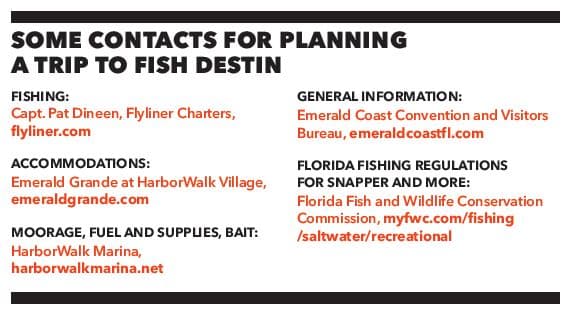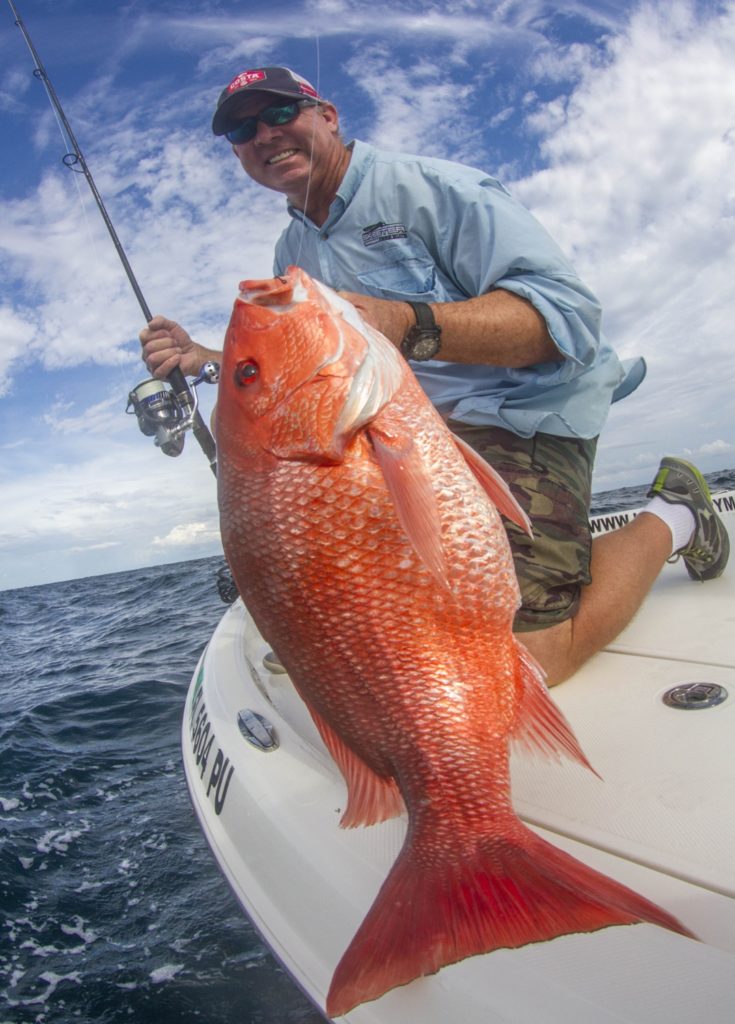
When Can You Fish for Red Snapper?
Although the federal season for private recreational fishermen to target red snapper in 2016 is just nine days in June (June 1-9), per the Florida Fish and Wildlife Commission, state waters in the Gulf of Mexico (out to 9 miles) will be open for red snapper from May 28 through July 10. In September and October, red snapper harvest in state waters will be permitted Friday through Sunday (and on Labor Day).
Check the FWC site for more on regulation.
A Bumpy Start
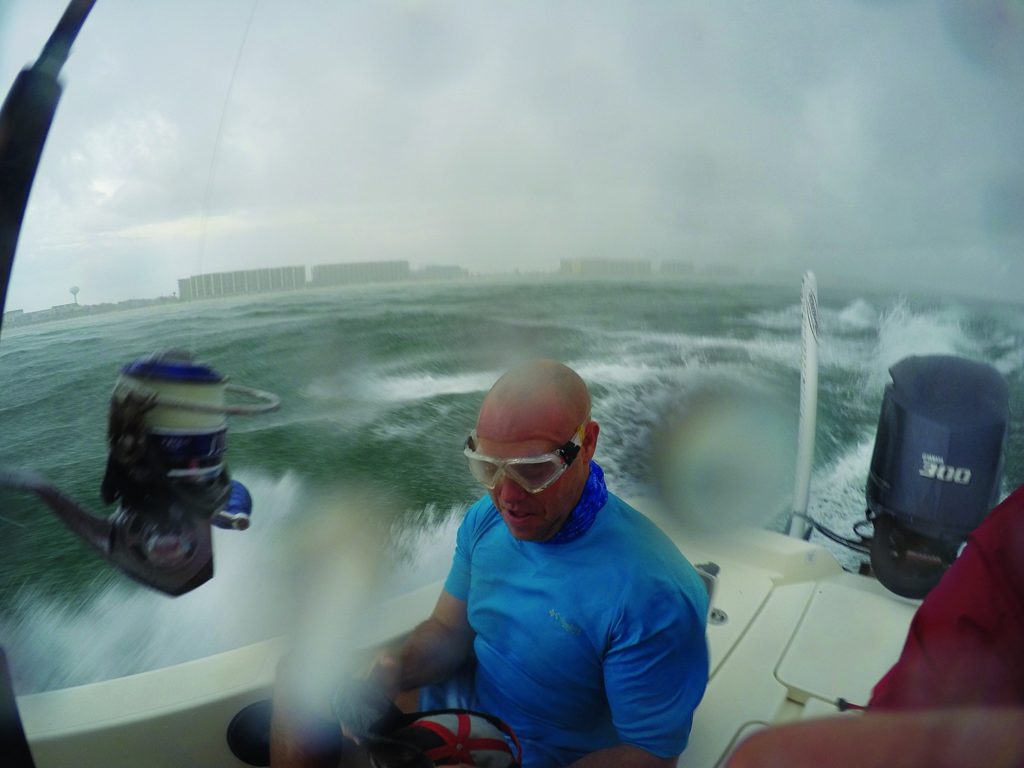
The freshening breeze slapping my face and the dark gray line over the Gulf of Mexico ahead of Capt. Pat Dineen‘s 240 Skeeter bay boat also had me wondering if we should just head back in and wait a day. Then I recalled that the next day’s forecast promised considerably worse.
So I snapped up my foul-weather jacket and gripped the T-top as we pounded toward the wall of sheeting and driving rain, knowing this too would pass.
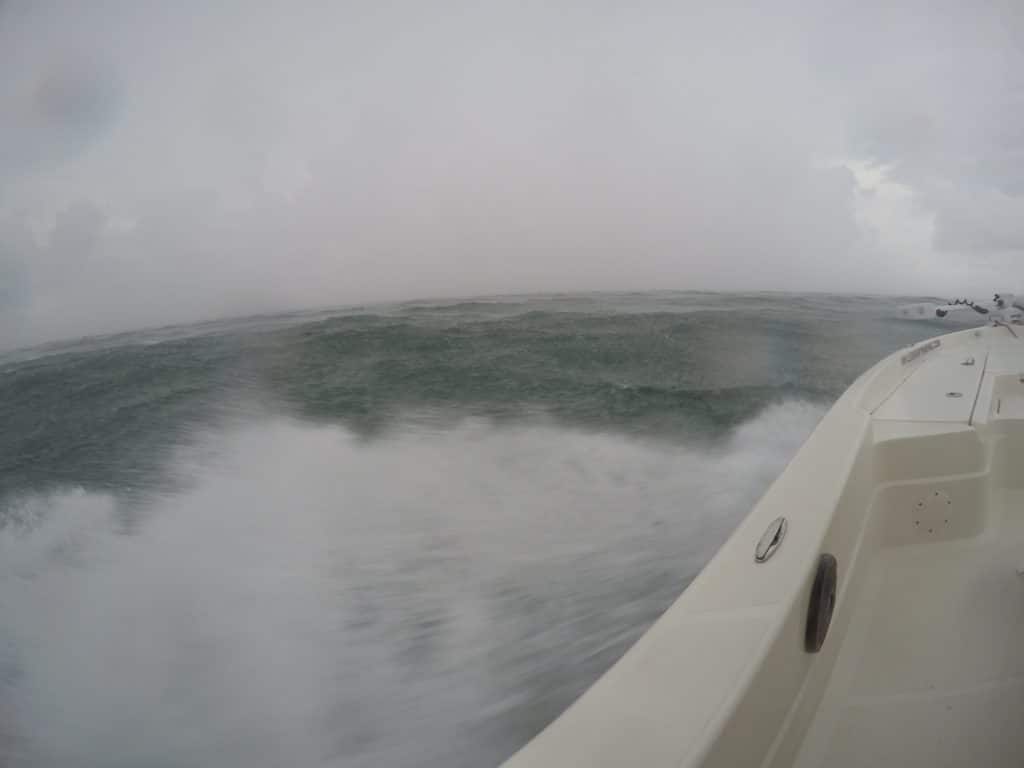
Shallow-Water Snapper Strategies
Given the forecast, we’d already abandoned any thoughts of heading out to deeper water. That, of course, was where the most red snapper, especially good-size ones, would be.
Or would they?
These days, snapper strategies for savvy locals like Dineen include targeting the prized game fish — including big ones — in shallow water only a short ride off Florida Panhandle beaches.
Alabama fisheries biologist and red snapper expert Bob Shipp says that’s a direct result of the surging snapper population in the Gulf of Mexico. Competition among so many of these aggressive predators is forcing more of them into the shallower waters traditionally favored mostly by smaller, younger fish.
As we cruised out of the squall line into the lighter showers on the backside, some 20 miles west of Destin, we were about to learn how productive these nearshore waters can be.
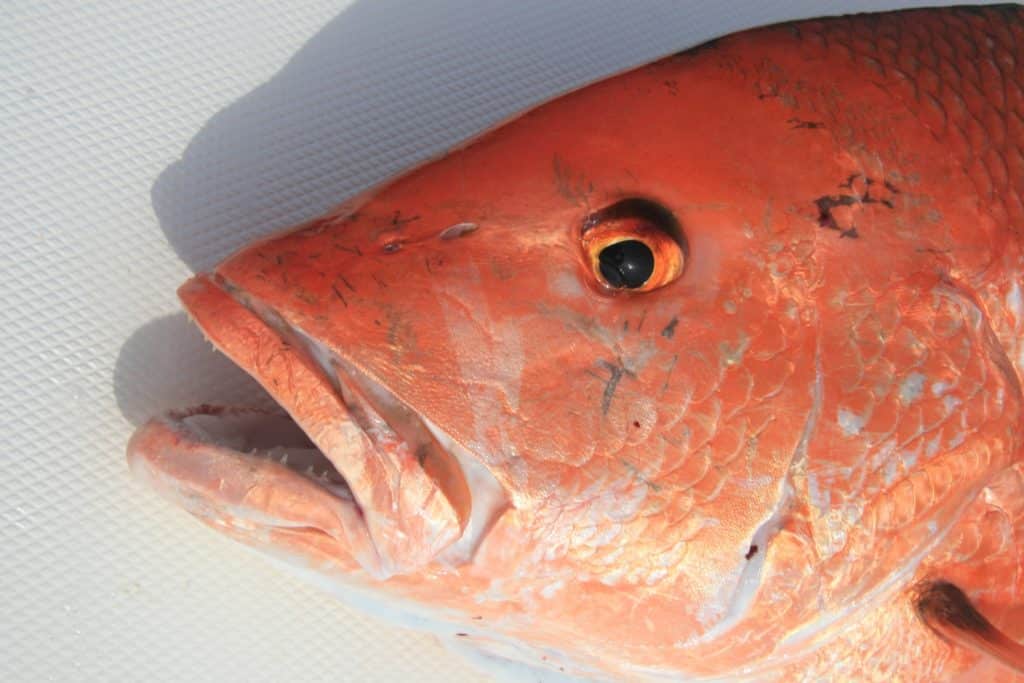
Fishing on Bits of Debris
Our first spot had us in about 70 feet of water. That’s well within state waters where the red snapper season is far longer than the season of 9 days in federal waters (out beyond 9 miles).
I glanced at the sounder screen, looking for a big rock pile or wreck or some sort of prominent structure. I saw some small dots suggesting baitfish, but otherwise, nothing jumped out at me. On closer inspection, I could make out a bit of debris on the bottom.
Dineen had said that we’d be fishing on very small areas of relief, which might be anything, but in many cases were old chicken coops that had been “donated” to the Gulf floor by fishermen to create fish havens where the sea bottom is for the most part otherwise uniformly barren.
Any bottomfishing enthusiast worth his salt knows it sure doesn’t take much in such a flat seascape to attract life.
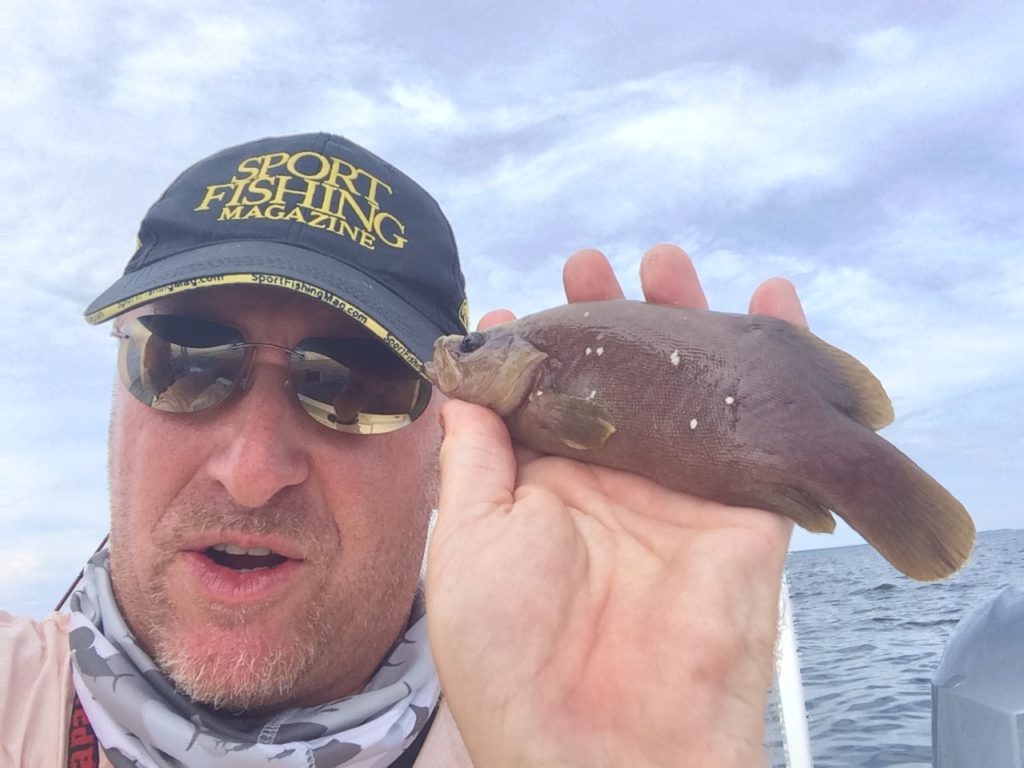
Sure enough, we found life. First to put a bend in his rod was Steve Wozniak, who hails from the Silicon Valley area, but nevertheless is not that Steve Wozniak. Rather, he’s the one who was featured in Sport Fishing as the man of a thousand fish species.
In fact, as of this writing, this fellow on a mission has documented more than 1,500 species caught in 85 countries. And yes, as always, he was hoping to grow his list during this outing — including, to my surprise, with a red snapper.)
Back to that bend in his rod. It was in fact a pretty good bend. And sure enough, up came the first red snapper of the day — not a monster, but at 6 or 7 pounds, a decent start and a keeper in anyone’s book. Or it would be, were the season at that time open.
Catch-and-Release with Minimal Mortality
Small-boat guides like Dineen who don’t carry federal permits can legally fish state waters for snapper; larger charter or party boats, most of which hold federal permits, are in fat city for the short federal season, but that’s it as far as red snapper go, since they can’t also legally fish state waters for red snapper at any time.
In any case, we knew up front that our spring day on the water didn’t fall within the state’s open season. And frankly, we really didn’t give a damn.
Dineen says that attitude isn’t terribly unusual. Many of his anglers are all about targeting red snapper to catch and release. While, yeah, they’d be very happy to throw a couple in the fish box for dinner, nevertheless, he says, “Most of my clients are here for the sheer fun of fishing.”
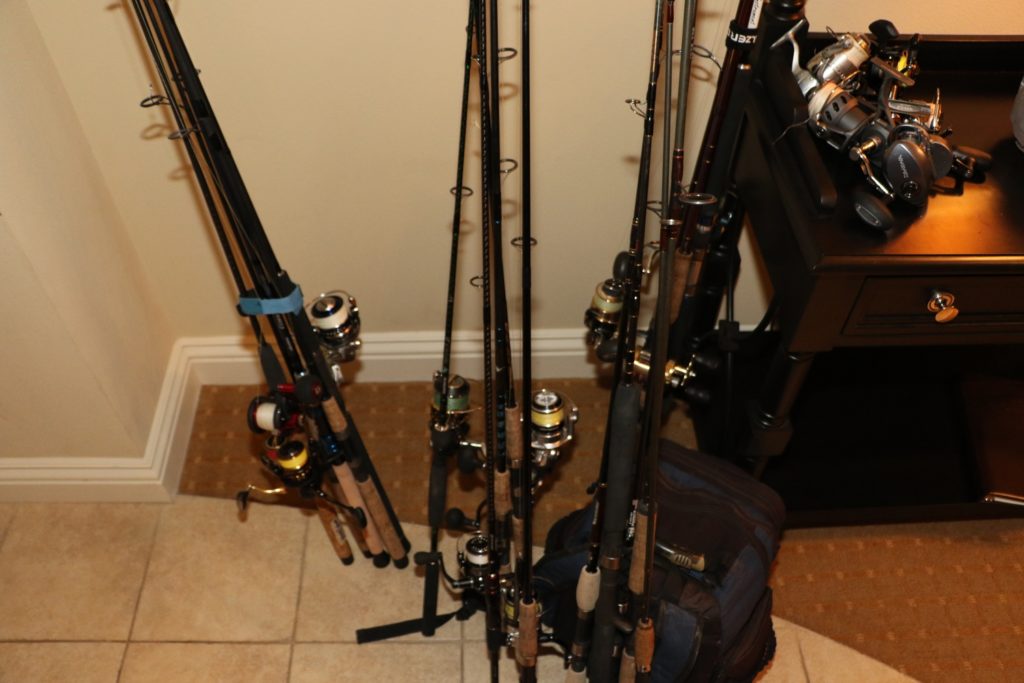
Like all the snapper we caught that day, Wozniak’s fish was released. We watched it thrust quickly down and out of sight.
That is another beautiful part of targeting snapper in such relatively shallow water: Barotrauma is seldom a problem, unlike in waters well over 100 feet. Because snapper from nearshore rubble piles don’t appreciably “blow up” from rapidly expanding trapped gases in their swim bladder, they can swim quickly back to bottom when released, minimizing mortality.
Light-Tackle Sport
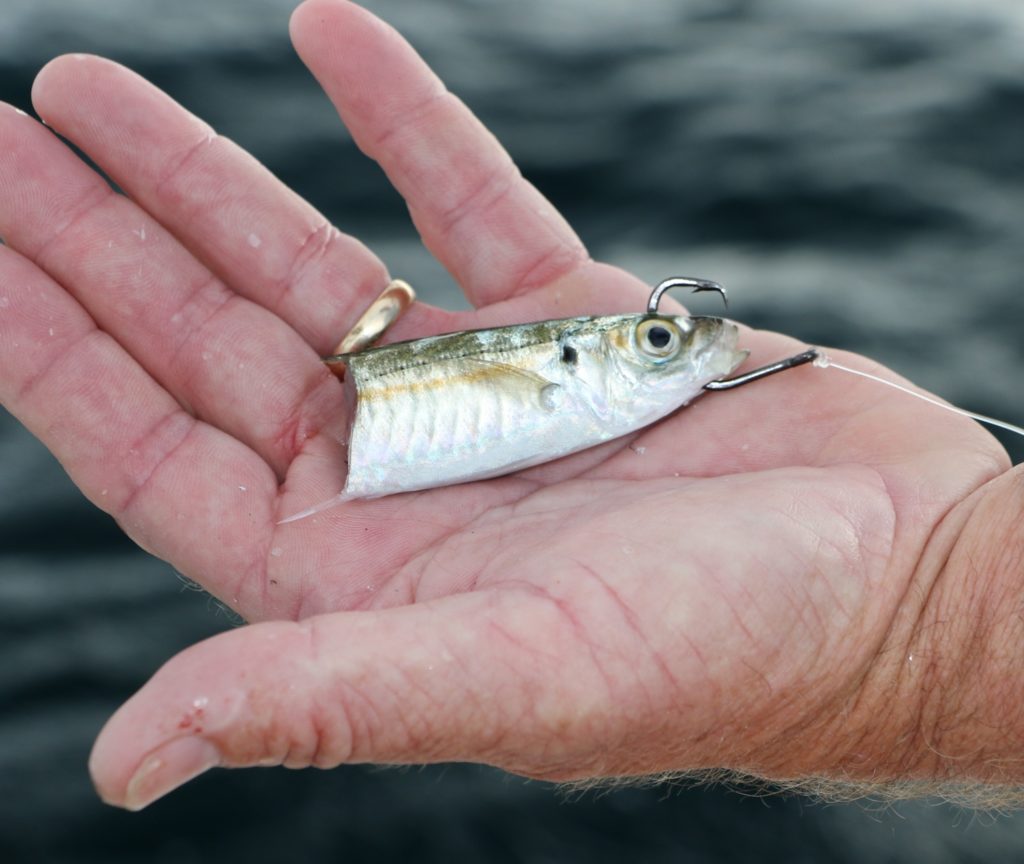
Our other angler, Adrian Gray — who had by now removed his goggles — emulated Wozniak, pinning a cigar minnow onto a light-wire circle hook. Another plus to fishing so near the shore is that light tackle works ideally with the minimal amount of lead needed. That and the small pieces of structure allow a great fight from these snapper.
Better still, Dineen says, when the Gulf is calm and clear, it’s easy to chum snapper well up into the water column. Among the chunks he tosses over, some have anglers’ hooks in them, and are allowed to sink slowly into the zone before being snapped up.
“They’re hitting fairly near the surface that way,” Dineen says. “So they’re far enough from any wreckage that we can use really light tackle, which offers a much better chance for bites than does heavy line.”
Often, the guide can draw fish well away from structure by feeding them as the boat drifts off it.
Fishing 20-pound braid on a little Accurate TwinSpin SR-6 reel, Gray had let his bait descend maybe halfway to bottom when it took off horizontally. Gray flipped the bait and waited as the line came tight and the circle hook bit. Then the tussle began.
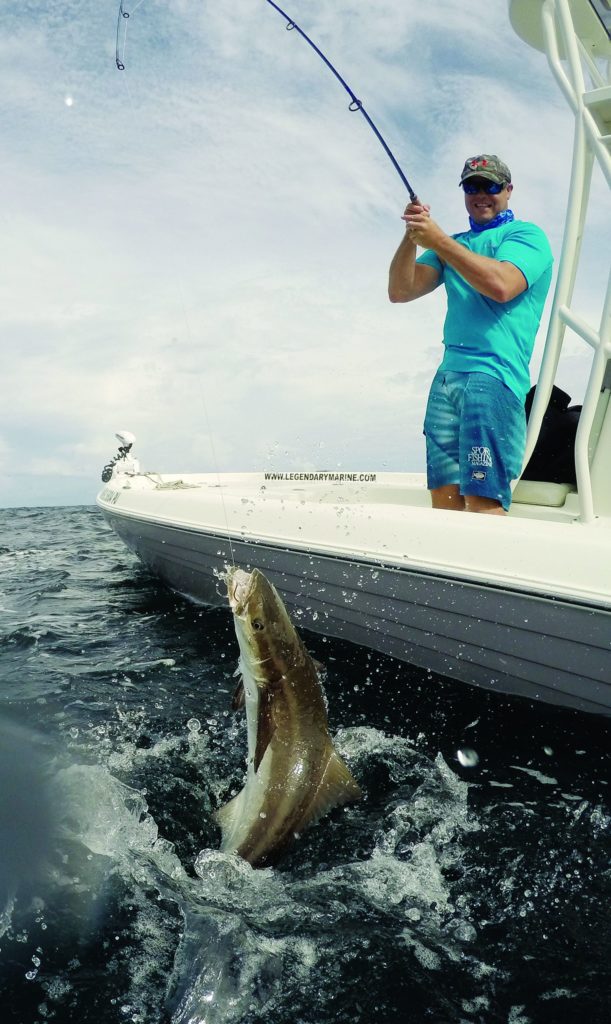
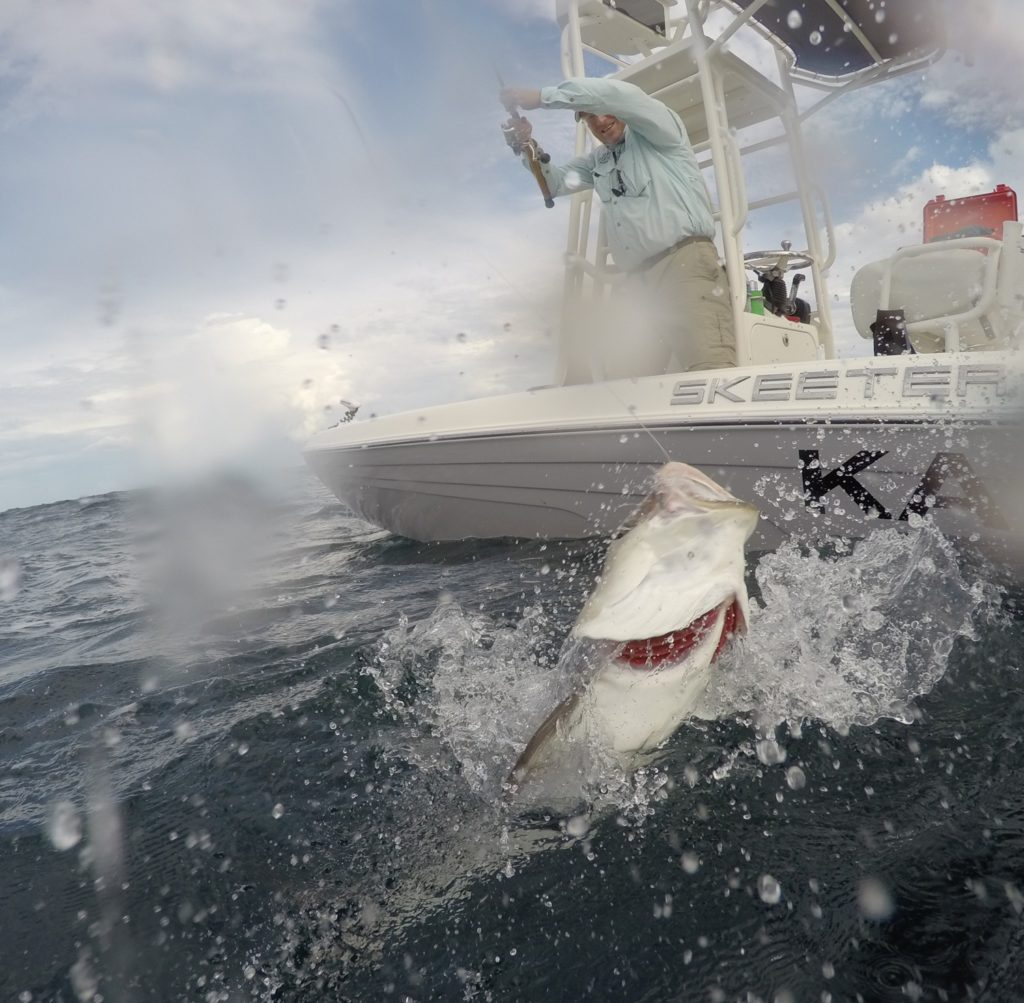
I suspected that there had to be at least one more decent red snapper on that small speck of whatever over the bottom, but figured if my compatriots were fishing liveys, I ought to try dropping a jig. I’ve certainly caught plenty of red snapper on metal jigs.
I was also fishing light gear, and thought a fairly small jig should work well. (After all, it did a good job of imitating a cigar minnow in size and shape.) I guessed there had to more than one snapper over that rubble.
But I wasn’t destined to find out. Like Gray, I found myself hooked up quickly enough, also far above the bottom, but this fish fought like neither a snapper nor a cobia.
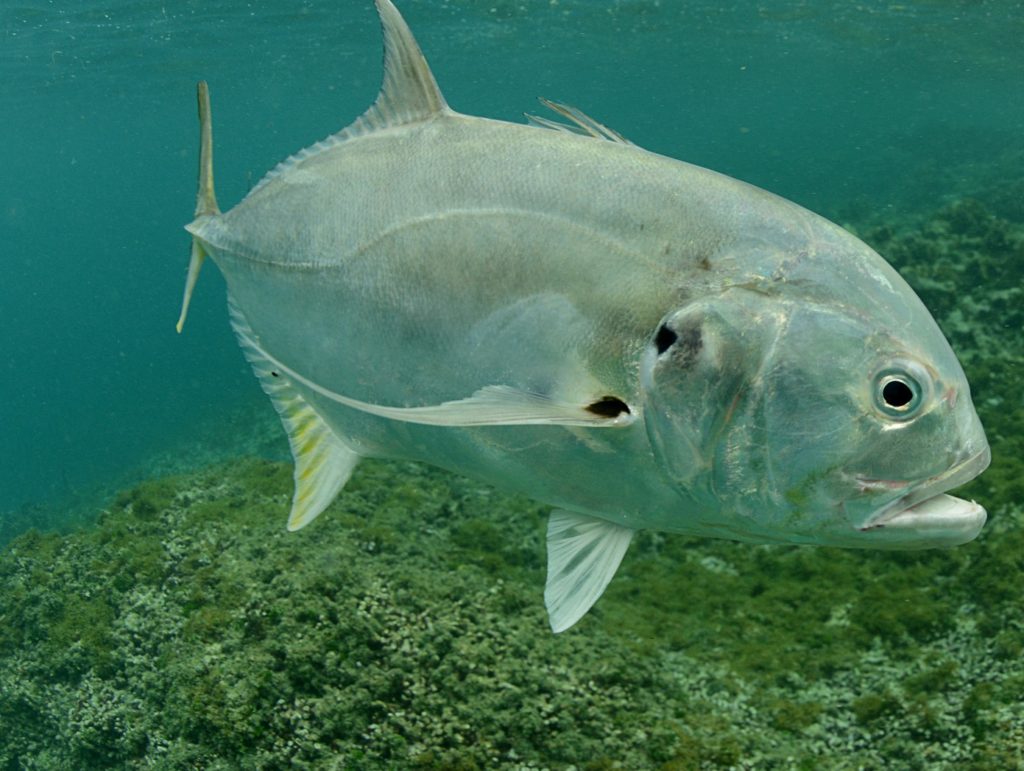
Rubble: Now You See It; Now You Don’t
After we’d sent that jack on its way, Dineen told us to keep lines in as we headed to our next spot. He wisely avoids pressuring any one of the small “junk piles” too much. And he has little need to do so, anyway: His GPS folder contains dozens of productive areas. Many of these, he says, he stumbled upon and recorded; others have been “gifted” to him from various sources.
With the shifting sands on the bottom, particularly after tropical-storm-force winds have stirred up the Gulf, Dineen sometimes discovers that certain rubble piles have disappeared since his last visit — or occasionally, the opposite happens, and a rubble pile he couldn’t find previously becomes exposed again.
To be sure, most of these areas of structure are modest indeed, often only a foot or two above the surrounding seafloor. But that’s all it takes.
So Dineen headed off, with more spots to try and plenty of bait in the livewell.
Fortunately, getting that bait had not required an hour of working sabiki rigs or anything of that sort, though there was no shortage of private and charter boats outside the inlet doing just that.
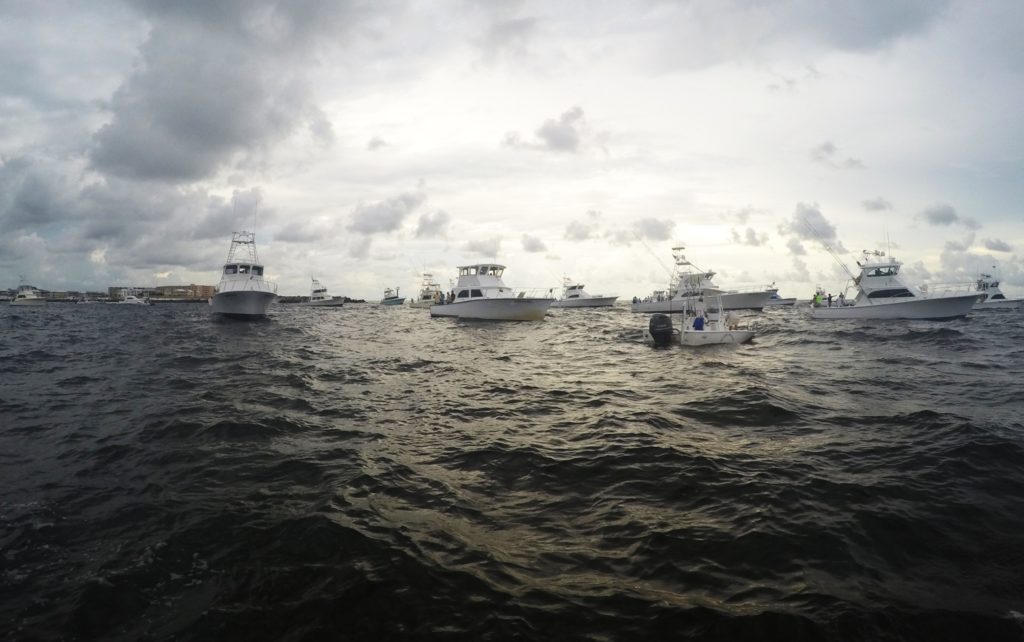
When we’d headed out of the harbor in the gray dawn earlier that morning, many boats had drifted in close proximity, all of them working to fill their wells. Dineen had pulled up to a bait vendor near the jetties, and after a short transaction, we ran past the other boats, on our way to go fishing.
Big Red Double
“This looks good,” Dineen said simply a short time later, as he eased the throttle into neutral and observed our drift. I could more easily discern this junk pile — and the red marks above it — on the bottom in about 80 feet on the sounder screen. Since I was busy fiddling with a camera, and this was a fun day anyway, Dineen grabbed a rod to make a drop.
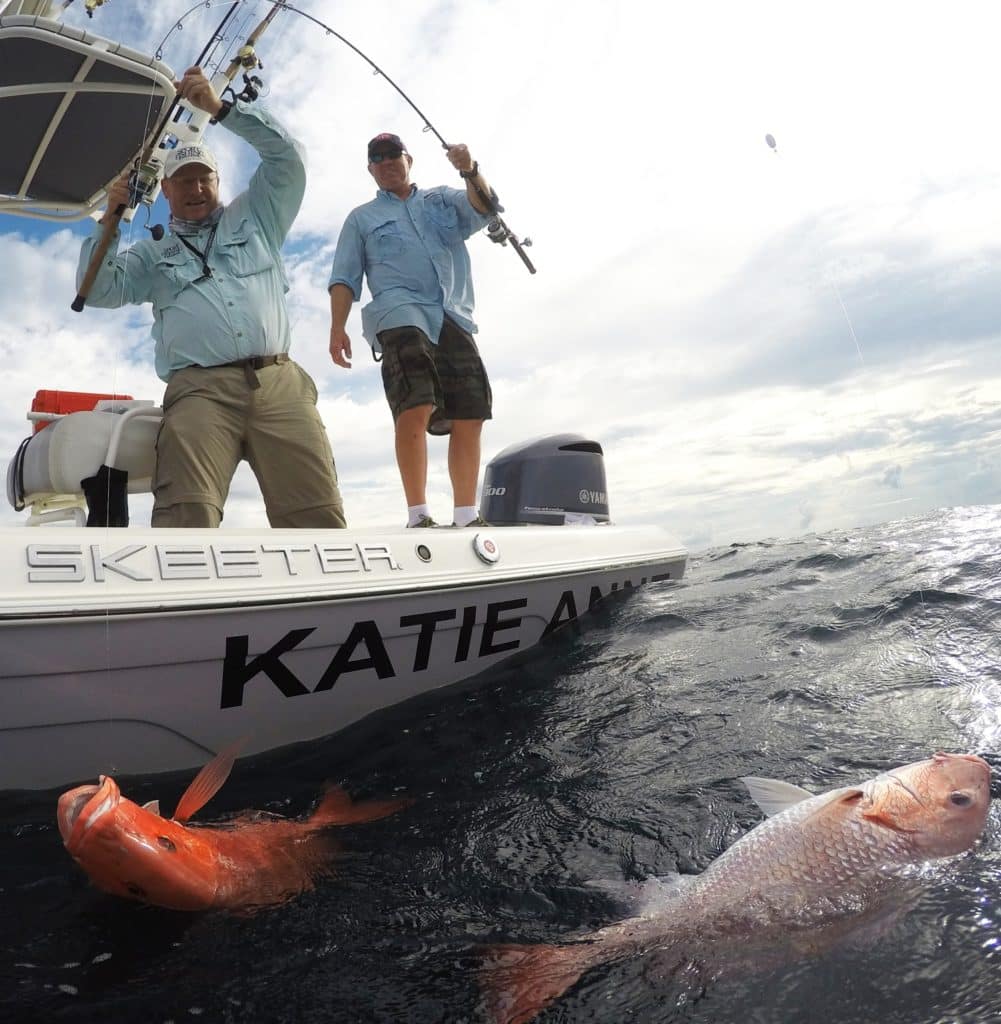
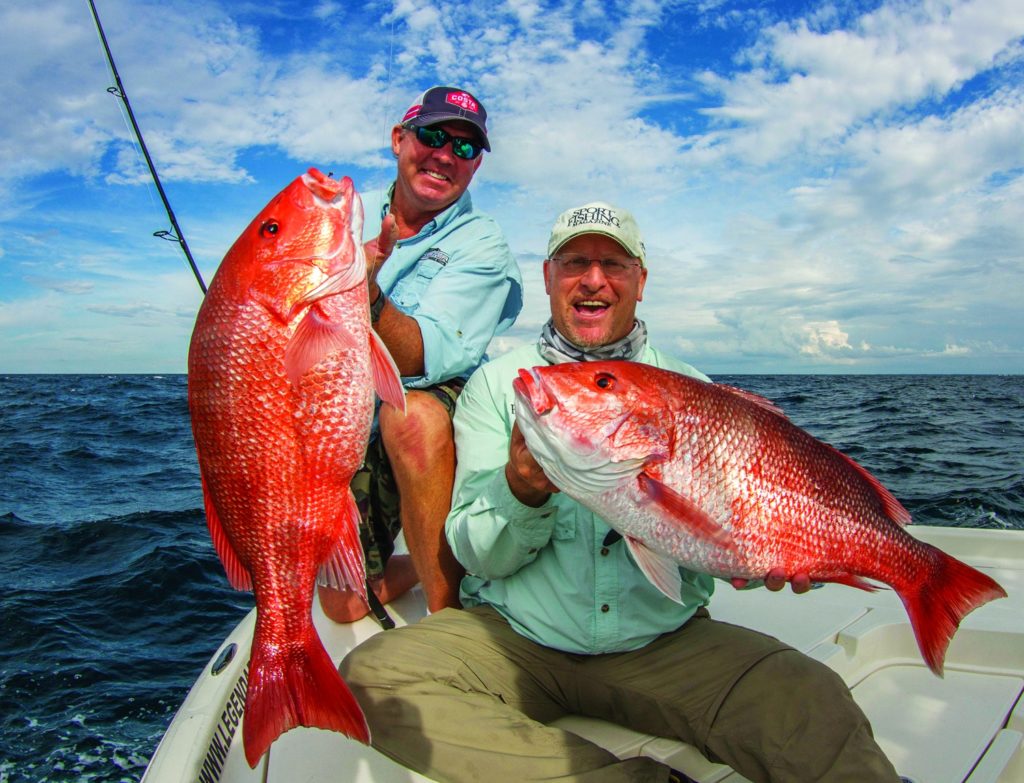
The Venerable Cigar Minnow
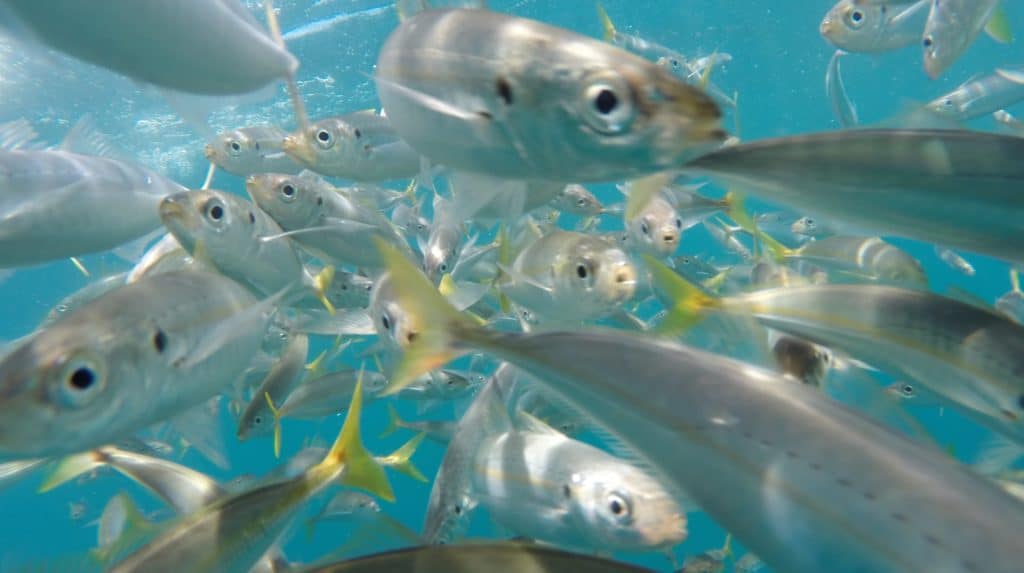
To sport fishermen from the Northeast to Texas, it’s a cigar minnow. To scientists, it’s Decapterus punctatus, the round scad. To predators such as red snapper, it’s lunch. Among the most common and abundant of small scad species, cigar minnows are hardy baits, live or dead. They’re often available in both forms, including 5-pound frozen blocks sold widely at marinas and bait shops. Besides stringing them onto a hook, you can cut them up to use in chunk line. While cigar minnows can grow to nearly a foot in length, they are typically about half that length or a bit more — or right around the size of a stogie.
